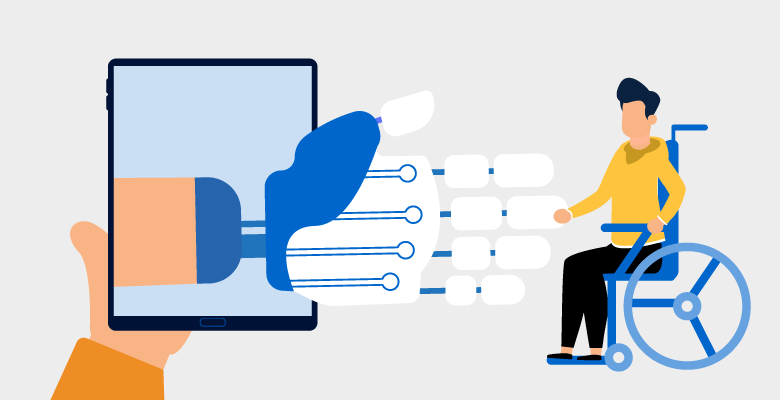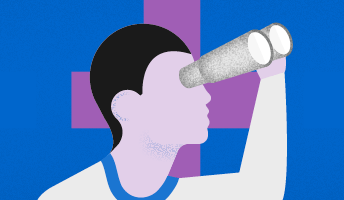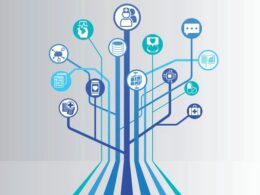Healthcare Transformers
August 4, 2021
Quick Takes
- In vitro diagnostics account for about only 2% of total healthcare spending, yet influence over 66% of clinical decision-making
- The convergence of digital technologies and diagnostic tests sets the stage for advancing patient experiences and outcomes
- Diagnostic trends enabled by digital technologies include point of care testing and emerging at-home diagnostic solutions, predictive and personal genetics, and real-time diagnostics
The promise of digital technologies to improve diagnostics
In vitro diagnostics (IVDs) play a key role in today’s healthcare system.
Their importance has been strongly highlighted in the global effort to combat and control the spread of SARS-CoV-2, the virus that causes COVID-19. Accounting for only 2% of total healthcare spending, IVDs influence over 66% of clinical decision-making. 1They play a crucial role in diagnosing disease, assessing treatment efficacy and patient health status, and/or enabling the prevention of disease.
IVD’s cover a massive spectrum of conditions, and are such a fundamental aspect of modern medicine that the World Health Organization has designated 122 test categories as essential. 2
Despite their tremendous utility, current diagnostic testing has room for improvement.
One limitation is that test results are typically reported as a single static number without any statement of uncertainty, which may lead to the erroneous assumption that laboratory results are exact. 3
Generally, the largest contributor to variability in laboratory results is biological variation, 3which may be overlooked when measurements are taken at one specific “snapshot” moment in time. Another limitation is that test data is often siloed and used in isolation for a single need.
Furthermore, the large number and variety of available tests makes it difficult for nonspecialist clinicians to accurately select the correct test or series of tests to perform. 4
Taken together, these limitations may hinder the ability of HCPs to leverage the full potential of testing to care for their patients.
The convergence of digital technologies and diagnostic tests sets the stage for advancing and improving patient experience and outcomes.
At the same time, it may help to alleviate some of the capacity and resource pressures on the health system and help to improve the speed and efficiency of the testing process.
Diagnostic trends made possible by digital technologies
The diagnostic trends that are helping shape the future of healthcare are enabled by the use of digital technology. Let’s take a look at 6 of these trends and how they are transforming healthcare.
- Point of Care testing and emerging at-home diagnostic solutions
- Predictive and personal genetics
- Real-time diagnostics
- Clinical decision support solutions
- Data-driven lab optimization solutions
- Artificial intelligence in medical imaging
1. Point of Care testing and emerging at-home diagnostic solutions
Innovative new technology allows for rapid testing near the patient — including their homes — which can help facilitate better disease diagnosis, monitoring, and management. It can also reduce the time to results, as travel time for samples and results are reduced or eliminated. 5 One main advantage of digitalization on Point of Care and at-home diagnostics includes the simplification of the testing procedure and the analysis and storage of results in a secure digital environment, which may be accessed by healthcare providers.
2. Predictive and personal genetics
Predictive genetic tests could have substantial benefits to the health outcomes by using a blood, hair, skin or other tissue samples from a person to help predict future risk of disease. 6The potential is enormous, as these tests can identify mutations that increase a person’s risk of developing genetic disorders before any symptoms appear. 7 If a medical intervention or preventive measures exist for a predicted disease, then the power of such digital tools becomes extremely useful and even lifesaving.
3. Real-time diagnostics
Wearable biosensors — ranging from watches, clothing, bandages, glasses, contact lenses and rings to specifically-built implantable and ingestible devices- are able to collect a plethora of physical health information such as heart rate, blood pressure, skin temperature, respiratory rate and body motion. Compared to more traditional diagnostic tests that only capture a “snapshot” view of a patient for a particular parameter, real-time diagnostics provide a much bigger and more robust data set for clinical decision-making. They enable continuous monitoring, provide instant feedback on any irregularities that may be flagged, and can be used to track a person’s general health and well-being. 8
4. Clinical decision support solutions
Clinical decision support (CDS) tools can help transform diagnostics. After obtaining a test result, HCPs are then left to work out the context and meaning of the test output and decide the best next steps in diagnosing or treating their patients. Designed to help sift through enormous amounts of digital data, CDS tools can support in suggesting next steps for treatments, alerting providers to available and helpful information, or by identifying potential problems such as dangerous drug interactions. 9The varying applications aim to help HCPs make more informed actions to improve patient outcomes.
5. Data-driven lab optimization solutions
Diagnostic labs are constantly seeking ways to reduce the number of unnecessary tests, while increasing the value of their offerings. The question is how best to capture and extract information from the tests they run in order to help improve their operations. One solution is by implementing robust business intelligence and analytics IT systems, which can analyze a vast amount of test result data and help lab managers improve lab utilization by finding sources of unnecessary testing quickly. 10 Using this technology, labs will be able to better manage their testing loads by eliminating unneeded tests and delivering improved value with those that they do run.
6. Artificial intelligence in medical imaging
Artificial intelligence systems can help HCPs diagnose disease based on medical images. A recent metaanalysis showed that the diagnostic performance of deep learning models was equivalent to that of healthcare professionals. 11
Despite the highlighted concerns in the research methodologies of the individual studies included in the metaanalysis, this application of AI holds enormous potential. 11In addition, the finding that study quality improved over time is encouraging. 11

Overcoming the barriers, together
There are some barriers to overcome:
- data privacy,
- the role of physicians in a digital future,
- and “solutionism”, defined as the belief that technology will effortlessly solve complex and often ill-defined health issues.
But the benefits are clear:
- digital trends in diagnostics have the potential to transform the fields of imaging and in vitro diagnostics
- and make healthcare more accessible and affordable, while improving outcomes for patients.
Understanding the trends that are disrupting healthcare as well as their benefits, challenges and requirements to implement, will help ensure that your organization is part of the digital revolution in healthcare.
Main questions are:
- What impact will digital technologies have on in vitro diagnostics in the future?
- What benefits will the increased use of digital tools bring to HCPs, labs, healthcare systems and patients?
- What are the potential pitfalls of the increased use of digital technology?
References
See the original publication.
Healthcare Transformers Insights are expert insights, opinions and strategies aimed at helping healthcare executives deliver improved patient care and financial value across the continuum of care. The site is owned by Roche Diagnostics.












